Click on the link to view the page:
This site is
 dedicated to the brave Persian women that were wisely running the country for thousands of years. In monarchic Persia, women enjoyed a level of gender equality unmatched even to this day! Female empero rs ruled over the Sassanian Persian Empire. Many ancient Persian cities and states were ruled by women and had their army totally under control of female commanders in order to insure loyalty. The significant role of women in Ancient Iran both horrified and fascinated the ancient Greek and Roman male-dominated societies. Women in Persia were very valuable beings; they often had important positions in the Courthouse, Ministries, Military, State Department, and other official administrations etc. It is essential for the Persian Women to know and under stand their glorious history of the past, because without it, they will not be able to plant their place in the future of Persia. Young Persian ladies shall understand that they were not born as second rate citizens. Persian women had the highest rank of society and were treated as goddesses before the imposition of the dark, backward, and pernicious Arab
dedicated to the brave Persian women that were wisely running the country for thousands of years. In monarchic Persia, women enjoyed a level of gender equality unmatched even to this day! Female empero rs ruled over the Sassanian Persian Empire. Many ancient Persian cities and states were ruled by women and had their army totally under control of female commanders in order to insure loyalty. The significant role of women in Ancient Iran both horrified and fascinated the ancient Greek and Roman male-dominated societies. Women in Persia were very valuable beings; they often had important positions in the Courthouse, Ministries, Military, State Department, and other official administrations etc. It is essential for the Persian Women to know and under stand their glorious history of the past, because without it, they will not be able to plant their place in the future of Persia. Young Persian ladies shall understand that they were not born as second rate citizens. Persian women had the highest rank of society and were treated as goddesses before the imposition of the dark, backward, and pernicious Arab  ideology of Islam upon Persia which destroyed our style of Federalism, Equal Rights, Freedom of speech, Freedom of religion and Democracy and replaced those factors with central brutal government, prejudice and slavery. I want to end by saying that I am certain that light will overcome darkness/fanaticism, and Persia, alike the legendary bird “Simorgh of Shahnameh”, will once again rise from her ashes and regain her rich history. Persia, has always been home to those who throughout history have fought for the idea of freedom and equality.
ideology of Islam upon Persia which destroyed our style of Federalism, Equal Rights, Freedom of speech, Freedom of religion and Democracy and replaced those factors with central brutal government, prejudice and slavery. I want to end by saying that I am certain that light will overcome darkness/fanaticism, and Persia, alike the legendary bird “Simorgh of Shahnameh”, will once again rise from her ashes and regain her rich history. Persia, has always been home to those who throughout history have fought for the idea of freedom and equality. 559  B.C. - Pantea Arteshbod was one of the all time greatest Persian commanders during the reign of Cyrus the Great (559 - 529 B.C). She was the wife of General Aryasb (Achaemenid's Arteshbod). She played an important role in keeping law & order in Babylonia after the conquest of the Neo-Babylonian Empire in 547 B.C. by Cyrus the Great. Commander Pantea truly was an important and sensitive military commander of Cyrus the Great, whose presence on the ancient battlefield made a difference to the outcome of the battle and played a part in building up the tapestry of ancient military Achievement. She was the commander of the elite force of Persian soldiers who performed the dual roles of both Imperial Guard and standing army during the Achaemenid Empire's expansion. They formed the elite core of the Persian army in times of war and the royal guard in times of peace in Achaemenid Persian Empire. The elite force were known as “The Immortals” because they were kept constantly at a strength of exactly 10,000 men, every killed or seriously wounded member was immediately replaced. To insure loyalty, the original members of this “immortal” fighting machine were Persians by bloodline and trained form early childhood (age 7+). Not everyone could become one of the 10,000 since the training was very rigorous and hard both physically and psychologically. They also followed a strict adherence to the religion of the prophet Zarathustra and his teachings. “The Immortals” were mainly used during the last stages of each battle as reinforcement by the order of the King of Kings to shock the enemies strategically. The name “Pantea” means: Strong and immortal.
B.C. - Pantea Arteshbod was one of the all time greatest Persian commanders during the reign of Cyrus the Great (559 - 529 B.C). She was the wife of General Aryasb (Achaemenid's Arteshbod). She played an important role in keeping law & order in Babylonia after the conquest of the Neo-Babylonian Empire in 547 B.C. by Cyrus the Great. Commander Pantea truly was an important and sensitive military commander of Cyrus the Great, whose presence on the ancient battlefield made a difference to the outcome of the battle and played a part in building up the tapestry of ancient military Achievement. She was the commander of the elite force of Persian soldiers who performed the dual roles of both Imperial Guard and standing army during the Achaemenid Empire's expansion. They formed the elite core of the Persian army in times of war and the royal guard in times of peace in Achaemenid Persian Empire. The elite force were known as “The Immortals” because they were kept constantly at a strength of exactly 10,000 men, every killed or seriously wounded member was immediately replaced. To insure loyalty, the original members of this “immortal” fighting machine were Persians by bloodline and trained form early childhood (age 7+). Not everyone could become one of the 10,000 since the training was very rigorous and hard both physically and psychologically. They also followed a strict adherence to the religion of the prophet Zarathustra and his teachings. “The Immortals” were mainly used during the last stages of each battle as reinforcement by the order of the King of Kings to shock the enemies strategically. The name “Pantea” means: Strong and immortal.
632 A.D . - Apranik was a Persian Sassanid High Ranking Commander of Army and the daughter of Piran (the great General of King Yazdgird III) and she fought gracefully, as a resistance commander, fighting against Arabo-Oppressors. Apranik was more like a TomBoy! Since childhood, she loved military. She was her Father's Right hand, and the amazing Nationalistic Feelings that she developed during her teenage years led her to become a military person. Like her father Apranik decided to become a professional soldier and she climbed the steps of progress, one by one and after her complete education, she managed to rise from a petty officer, to a full commander of the Persian Army. Apranik was a tireless inspiration for her troops in defense of their nation against outside aggressors. The Arab Bandits attacked Persia's south borders at the worst time possible, the continuous centuries of war with the Roman Empire had weakened the Persian Empire economically, militaristically, & spiritually and cost many lives and the last Sassanid king Yazdegard was not paying any attention to the rise of Islam and the invading barbaric arabs in the south at that time. Apranik fully took the command of a major battalion of the Persian Army directly after the full-scale invasion and occupation by Arab armies and she led her devoted warriors against the Arab oppressors even after the loss of the Persian Empire and Sassanid Dynasty. As she got wiser, she found out that “Organized Warfare” with the Arabs or “The Desert Rats” as she refered to them, who invade and hide, and then reinforce and invade again, does not work; therefore, she started a campaign of a treacherous battle against the occupiers. For years to come, Apranik, first fought an official war and later on when all hopes were destroyed, Apranik, started her Hit and Run Rebellious Campaign until death. Apranik's Dedicated Commando Warfare were legendary and relentless. Her white horse has always been a famous symbol of freedom and still is til this day. The name “Apranik” means: Daughter of elder.
. - Apranik was a Persian Sassanid High Ranking Commander of Army and the daughter of Piran (the great General of King Yazdgird III) and she fought gracefully, as a resistance commander, fighting against Arabo-Oppressors. Apranik was more like a TomBoy! Since childhood, she loved military. She was her Father's Right hand, and the amazing Nationalistic Feelings that she developed during her teenage years led her to become a military person. Like her father Apranik decided to become a professional soldier and she climbed the steps of progress, one by one and after her complete education, she managed to rise from a petty officer, to a full commander of the Persian Army. Apranik was a tireless inspiration for her troops in defense of their nation against outside aggressors. The Arab Bandits attacked Persia's south borders at the worst time possible, the continuous centuries of war with the Roman Empire had weakened the Persian Empire economically, militaristically, & spiritually and cost many lives and the last Sassanid king Yazdegard was not paying any attention to the rise of Islam and the invading barbaric arabs in the south at that time. Apranik fully took the command of a major battalion of the Persian Army directly after the full-scale invasion and occupation by Arab armies and she led her devoted warriors against the Arab oppressors even after the loss of the Persian Empire and Sassanid Dynasty. As she got wiser, she found out that “Organized Warfare” with the Arabs or “The Desert Rats” as she refered to them, who invade and hide, and then reinforce and invade again, does not work; therefore, she started a campaign of a treacherous battle against the occupiers. For years to come, Apranik, first fought an official war and later on when all hopes were destroyed, Apranik, started her Hit and Run Rebellious Campaign until death. Apranik's Dedicated Commando Warfare were legendary and relentless. Her white horse has always been a famous symbol of freedom and still is til this day. The name “Apranik” means: Daughter of elder.
 632 A.D. - ... Apranik and her Ranks, never surrendered, they have fought an on going bloody battle to the bitter ends. Apranik became a symbol for the “Persian Resistance & Freedom”. Her braveries were so known, that she became the talk of the “Persian Resistance” and Persians created an expression for her! Every time a female soldier would have shown bravery among the resistance, other soldiers would smile and call her: “Apranik”. Apranik's famous words and policy were: “No retreat, no surrender”. Apranik acted as a battery charger for resistances spirit and chose to fight with her soldiers, until the bitter end, she chose to be cut to pieces by the Arab Sword, than to become a whore in the Arab Bed... and eventually Apranik became a legend. The Legend of Apranik, is still living in every female freedom fighter of Iran's heart. May her great spirit rest in peace. Apranik Daughter of renowned general Piran or as they used to call her “Apranik of Piran's” will always be in the “Persian Resistance Hall of Fame”. This is what the Persian women were made of!
632 A.D. - ... Apranik and her Ranks, never surrendered, they have fought an on going bloody battle to the bitter ends. Apranik became a symbol for the “Persian Resistance & Freedom”. Her braveries were so known, that she became the talk of the “Persian Resistance” and Persians created an expression for her! Every time a female soldier would have shown bravery among the resistance, other soldiers would smile and call her: “Apranik”. Apranik's famous words and policy were: “No retreat, no surrender”. Apranik acted as a battery charger for resistances spirit and chose to fight with her soldiers, until the bitter end, she chose to be cut to pieces by the Arab Sword, than to become a whore in the Arab Bed... and eventually Apranik became a legend. The Legend of Apranik, is still living in every female freedom fighter of Iran's heart. May her great spirit rest in peace. Apranik Daughter of renowned general Piran or as they used to call her “Apranik of Piran's” will always be in the “Persian Resistance Hall of Fame”. This is what the Persian women were made of!
 632 A.D. - Azarmidokht Sassanid was The Empress of Persia and daughter of Khosrow Parviz. She was the twenty-seventh Sassanid Monarch of Persia and she ruled the empire after her sister Purandokht during the Sassanid Dynasty era. The name “Azarmidokht” means: Youthful girl.
632 A.D. - Azarmidokht Sassanid was The Empress of Persia and daughter of Khosrow Parviz. She was the twenty-seventh Sassanid Monarch of Persia and she ruled the empire after her sister Purandokht during the Sassanid Dynasty era. The name “Azarmidokht” means: Youthful girl.
584 B.C. - Mandana was the Queen consort of King Cambyses I of Anshan and mother of Cyrus the Great, ruler of the Persia's Achaemenid Dynasty (the 1st Persian Emperor and the writer of the first declaration of human rights in the globe, named The Cyrus Cylinder). There are references to Mandana's death as 559 B.C. in the history books. The name “Mandana” means: Eternal.
 213 A.D. - Sura was one of the Greatest Heroines of Persian History, A strategical and Military Genius during the Parthian dynasty. She was the daughter of Ardavan the Fifth, the last king of the Parthian Empire (Ashkanid Empire). She is mentioned in the history books as her father's right hand. Sura had the rank of: Ashkanid's General, Sepahbod (Lieutenant General). She had a grudge against King Aradeshir because on 225 A.D. Ardeshir (Son of Babak) went to a great war against her father (Ardavan V) and killed him in the war. Ardeshir restored the central power in Persia and completely changed the feudalistic system of Ashkanid Parthians. He set Zoroasterianism as the official religion of Persia. His move paved the way for future rulers to use Zoroastrianism as the base of their actions and established a very strong monarchy based on the Achaemanid system. The name “Sura” means: Flower face.
213 A.D. - Sura was one of the Greatest Heroines of Persian History, A strategical and Military Genius during the Parthian dynasty. She was the daughter of Ardavan the Fifth, the last king of the Parthian Empire (Ashkanid Empire). She is mentioned in the history books as her father's right hand. Sura had the rank of: Ashkanid's General, Sepahbod (Lieutenant General). She had a grudge against King Aradeshir because on 225 A.D. Ardeshir (Son of Babak) went to a great war against her father (Ardavan V) and killed him in the war. Ardeshir restored the central power in Persia and completely changed the feudalistic system of Ashkanid Parthians. He set Zoroasterianism as the official religion of Persia. His move paved the way for future rulers to use Zoroastrianism as the base of their actions and established a very strong monarchy based on the Achaemanid system. The name “Sura” means: Flower face.
 485 B.C. - Artemisia I: became the ruler of Halicarnassius (A Greek City-State and a colony of Persian Empire). She ruled under the overlordship of the Persian Emperor Xerxes I (Kheshayar Shah). She was the legendary Grand Admiral and leader of the Persian Navy, She was Xerxes' great love. A great powerful, independent and intelligent woman who won many battles during the Achaemnid Dynasty Era. You can see the spirit of Cyrus in the sky at the background of the painting. She is a living legend and a role model for Persian Women. The name “Artemisia” means: The great speaker of truth.
485 B.C. - Artemisia I: became the ruler of Halicarnassius (A Greek City-State and a colony of Persian Empire). She ruled under the overlordship of the Persian Emperor Xerxes I (Kheshayar Shah). She was the legendary Grand Admiral and leader of the Persian Navy, She was Xerxes' great love. A great powerful, independent and intelligent woman who won many battles during the Achaemnid Dynasty Era. You can see the spirit of Cyrus in the sky at the background of the painting. She is a living legend and a role model for Persian Women. The name “Artemisia” means: The great speaker of truth.
480 B.C. - Artemisia I: When the Persian King Xerxes went to war against Greece 480 BC, Artemisia led her powerful ships and helped Xerxes defeat the Greeks in the beginning phases of naval battle of Salamis. The Greeks offered a reward of 10,000 drachmas for capturing Artemisia's head, but no one succeeded in winning the prize. Understand that back then Persia was the sole superpower of the globe and Greece consisted of tens of separated and scattered city-states, each played their own tunes! Some of these city-states were pro Persia, some were anti Persia, some were neutral and some were even parts of Persia as protectorates!

The Achaemenid Unit of Persian Female Warriors. The Commander is in front
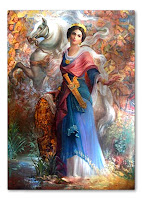 480 B.C. - Artemisia I: She was sexy, strong, built, a typical athletic woman with beauty and culture. She made an oath to get Xerxes, the Great King of Persia. She was nuts about him. There was something about Xerxes that drove her crazy! Xerxes was a great military mind himself. Xerxes was also a great flirt, a playboy, Ladies' man, and a very arrogant aristocrat.. Capturing his heart was a great task to do for Artemisia. To win Xerxes' heart she had to impress him militaristically! Xerxes had seen it all, he had women throwing themselves at him from all parts of his empire from Chinese border in the East and Aristocrats from Ariana and Bakhtar Satrapies, all the way to Greek colonies of Persian Empire in the West and Europe to the Southern borders of Africa in south! She eventually impressed Xerxes by her brave Navy campaigns and bravery in battlefield. She gave naval support to Xerxes and Mardoniuses forces. She fought in the battle like a man. she showed military genius and ingenuity. She impressed the hell out of Xerxes. By doing this, she for sure captured his heart and definitely accomplished getting a high position in Persian government. Xerxes had never seen a woman quite like her! Artemisia became Xerxes' lover, actually his greatest love until that day! Yet Xerxes never married her, funny how Xerxes later ended up marrying Esther his Jewish Princess! Yes, no matter how much this great love affair between Xerxes and Artemisia dragged on, yet they never got married! It was diny for Esther to come along in the years ahead and to steal Xerxes' heart again! Grand Admiral Artemisia wanted a very high position and command in Persian CourtHouse to establish her absolute power and authority in the Persian Achaemenid's Court. Well, Persian Empire being the only Super Power in the known world back then, she wanted to be an important part of it! Artemisia saw life as a large battlefield!
480 B.C. - Artemisia I: She was sexy, strong, built, a typical athletic woman with beauty and culture. She made an oath to get Xerxes, the Great King of Persia. She was nuts about him. There was something about Xerxes that drove her crazy! Xerxes was a great military mind himself. Xerxes was also a great flirt, a playboy, Ladies' man, and a very arrogant aristocrat.. Capturing his heart was a great task to do for Artemisia. To win Xerxes' heart she had to impress him militaristically! Xerxes had seen it all, he had women throwing themselves at him from all parts of his empire from Chinese border in the East and Aristocrats from Ariana and Bakhtar Satrapies, all the way to Greek colonies of Persian Empire in the West and Europe to the Southern borders of Africa in south! She eventually impressed Xerxes by her brave Navy campaigns and bravery in battlefield. She gave naval support to Xerxes and Mardoniuses forces. She fought in the battle like a man. she showed military genius and ingenuity. She impressed the hell out of Xerxes. By doing this, she for sure captured his heart and definitely accomplished getting a high position in Persian government. Xerxes had never seen a woman quite like her! Artemisia became Xerxes' lover, actually his greatest love until that day! Yet Xerxes never married her, funny how Xerxes later ended up marrying Esther his Jewish Princess! Yes, no matter how much this great love affair between Xerxes and Artemisia dragged on, yet they never got married! It was diny for Esther to come along in the years ahead and to steal Xerxes' heart again! Grand Admiral Artemisia wanted a very high position and command in Persian CourtHouse to establish her absolute power and authority in the Persian Achaemenid's Court. Well, Persian Empire being the only Super Power in the known world back then, she wanted to be an important part of it! Artemisia saw life as a large battlefield!
 559 B.C. - Amitis Shahbanu was the Queen of the Persian Achaemenid Empire and the daughter of Astiak Shah of Mad (The Median King), Wife of Cyrus the Great (the 1st Persian Emperor and the writer of the first declaration of human rights in the globe, named The Cyrus Cylinder). According to Herodotus, Cyrus loved her dearly and, when she died, ordered all the subjects of his empire to observe “a great mourning”. There is a report in the chronicle of Nabonidus that, when "the king's wife died," there was public mourning in Babylonia lasting for weeks and that the queen was buried in the tower called Zendaan-e Solaymaan at Pasargadae Persia. The name “Amitis” means: Wise friend
559 B.C. - Amitis Shahbanu was the Queen of the Persian Achaemenid Empire and the daughter of Astiak Shah of Mad (The Median King), Wife of Cyrus the Great (the 1st Persian Emperor and the writer of the first declaration of human rights in the globe, named The Cyrus Cylinder). According to Herodotus, Cyrus loved her dearly and, when she died, ordered all the subjects of his empire to observe “a great mourning”. There is a report in the chronicle of Nabonidus that, when "the king's wife died," there was public mourning in Babylonia lasting for weeks and that the queen was buried in the tower called Zendaan-e Solaymaan at Pasargadae Persia. The name “Amitis” means: Wise friend
 241 A.D. - Azadokht Shahbanu was the Queen of the Persian Empire and the wise wife of Shapour the Great. She established Jondi Shahpur, a major center of higher learning together with her husband. Azadokht was not a military woman but she was very skilled with her sword. Persia were constantly in war with the Roman Empire for many centuries and the Roman army had never seen women soldiers in war fighting so bravely and brutally next to male soldiers and valiantly defending their homeland until the last drop of blood was shed... During the Sassanian dynasty many of the Persian soldiers captured by Romans were women who were fighting along with the men. Rome was a brutal empire with her economy based on slavery, POWs and built on blood and their main goal was to conquer Persia but they never succeeded despite many endless and unnecessary wars that weakened both sides and cost many lives. The Great King Shahpur of Persia invaded the Roman Empire and took Emperor Valerian and the entire Roman army prisoner as a lesson to never attack Persia again! He was victorious over three Roman emperors: Valerianus, Gordianus III and Philip. The name “Azadokht” means: Free girl.
241 A.D. - Azadokht Shahbanu was the Queen of the Persian Empire and the wise wife of Shapour the Great. She established Jondi Shahpur, a major center of higher learning together with her husband. Azadokht was not a military woman but she was very skilled with her sword. Persia were constantly in war with the Roman Empire for many centuries and the Roman army had never seen women soldiers in war fighting so bravely and brutally next to male soldiers and valiantly defending their homeland until the last drop of blood was shed... During the Sassanian dynasty many of the Persian soldiers captured by Romans were women who were fighting along with the men. Rome was a brutal empire with her economy based on slavery, POWs and built on blood and their main goal was to conquer Persia but they never succeeded despite many endless and unnecessary wars that weakened both sides and cost many lives. The Great King Shahpur of Persia invaded the Roman Empire and took Emperor Valerian and the entire Roman army prisoner as a lesson to never attack Persia again! He was victorious over three Roman emperors: Valerianus, Gordianus III and Philip. The name “Azadokht” means: Free girl.
522-486 B.C. - Atusa Shahbanu was the Queen of the Persian Empire, wife of the mighty Persian Achaemenid King Darius the Great, daughter of Cyrus the Great, a half-sister of Cambyses II and the mother of Xerxes the Great (Kheshayar Shah). The name “Atusa” means: Beautiful body. (Alternative spellings are: Atoosa, Atousa, or Atossa.)
404 B.C. - Amestris was the Achaemenid's military Commander and the beautiful daughter of The Persian King Darius II (423 BC). Her mother Pari Satis was a Arteshbod General of the Achaemenid's Imperial Army. The name “Amestris” means: Friend.
423 B.C. - Pari Satis, Arteshbod General of the Achaemenid's Imperial Army, wife of The Persian Empire's King Darius the Second. In the background you can see the engraving of Darius the Great on the wall. The name “Pari” means: Angel-like.
522 B.C. - Lieutenant Artunis, Commander of Achaemenid's Persian Army, daughter of Artebaz, Sepahbod (Lieutenant General) of Darius the Great. She was a mighty brave woman. The name “Artunis” means: True and faithful.
485 B.C. - Grand Admiral Artemisia with Xerxes The Great. Many people mistakenly assume that the lady in this portrait is Esther! Esther eventually became Xerxes' wife and Shahbanu of Persia; however, Xerxes' original love was Artemis. This is a factual based portrait of Artemis with Xerxes the Great (Kheshayar Shah).
334 B.C. - Youtab Aryobarzan was the Commander of Achaemenid's Army, sister of the legendary Persian Hero, Aryobarzan (Achaemenid's General), she stood side by side to her brother and fought the Greeks and Macedonians to death during the invasion of Alexander. The name “Youtab” means: Unique.
326 B.C. - Roxana Achaemenid was daughter of Darius III, Shahanshah of The Persian Empire! She married the King of Macedonia: Alexander when he professed his love for her in the fortress around 327 BC. Roxana bravely accompanied him on his campaign in India in 326 BC. She bore him a posthumous son called Alexander IV Aegus, after Alexander's sudden death at Babylon. Roxana and her son became victims of the political intrigues of the collapse of the Alexandrian Empire. Roxana murdered Alexander's other widow, Stateira II, and Stateira's sister Drypteis. Roxana and her son were protected by Alexander's mother, Olympias, in Macedon, but her assassination in 316 B.C. allowed Cassander to seek kingship. Since Alexander IV Aegus was the legitimate heir to the Alexandrian empire, Cassander ordered him and Roxana assassinated around 309 BC. This is a factual based portrait and the historically accurate Roxanna. The name “Roxana” means: The dawn and luminous beauty (in both Persian and Bactrian).
590 A.D. - Shirin Shahbanu was the Queen of the Persian Empire and the wife of King Khosrow Parviz 590-628 A.D. whose military exploits extended the empire to its furthest extent and conquered much Byzantine empire territory. Shirin was a christian princess who eventually consents to marry King Khosrow after several romantic and heroic episodes, including his rescue of her from a lion. Their historical love story has been further romanticized by Persian scholars. During his reign, King Khosrow Parviz built several magnificent palaces in the Kermanshah Province (west of Iran) and named them after his queen, Shirin; hence the city got its name from there and is now called “Qasr-e Shirin”, literary meaning “Palace of Shirin”. The name “Shirin” means: Sense of sweetness.
 750 A.D. - Azad Deylami was a Guerrilla Commander and a partisan leader from Caspian Sea shores in north of Iran, who fought bravely for many years with her band of freedom fighters against the Arab Oppressors, during the Occupation era. Azad was from Daylam (Today's State of Gilan in Iran). Daylam had a history of rebellion. Until this day, State of Gilan has been the mother and the home for many of the Revolutionaries and freedom fighters of Iran. Azad-e Daylami (Azad of Daylam) was one of the very first brave daughters of this region. She became one of the most famous freedom fighters of the region and a symbol of Persian Resistance against the Forced Religion and Government of Islam. The name “Azad” means: Free.
750 A.D. - Azad Deylami was a Guerrilla Commander and a partisan leader from Caspian Sea shores in north of Iran, who fought bravely for many years with her band of freedom fighters against the Arab Oppressors, during the Occupation era. Azad was from Daylam (Today's State of Gilan in Iran). Daylam had a history of rebellion. Until this day, State of Gilan has been the mother and the home for many of the Revolutionaries and freedom fighters of Iran. Azad-e Daylami (Azad of Daylam) was one of the very first brave daughters of this region. She became one of the most famous freedom fighters of the region and a symbol of Persian Resistance against the Forced Religion and Government of Islam. The name “Azad” means: Free.
 632 A.D. - Turandokht Sassanid was the beautiful Princess of Persia during the Sassanid dynasty era and the daughter of Khosrow Parviz, sister of Azarmidokht and Purandokht. The legend and fairy tale of Princess Turandokht (Turandot) is very famous in Europe and it was taken from the Persian collection of stories called: The Book of One Thousand and One Nights (Hezar o-yek shab), she became an icon of nobility and stature. The Europeans changed the nationalities of the historical characters but other than that everything else is intact and true to the original. Turan is the ancient Persian name for Central Asia which used to be part of the Persian Empire. The original Turanians are the Tuirya Iranian people of the Avesta age (1737 B.C). The name “Turandokht” means: Turanian girl (Turan's Daughter) with "dokht" being a contraction for "Dokhtar" in Persian (meaning "Daughter").
632 A.D. - Turandokht Sassanid was the beautiful Princess of Persia during the Sassanid dynasty era and the daughter of Khosrow Parviz, sister of Azarmidokht and Purandokht. The legend and fairy tale of Princess Turandokht (Turandot) is very famous in Europe and it was taken from the Persian collection of stories called: The Book of One Thousand and One Nights (Hezar o-yek shab), she became an icon of nobility and stature. The Europeans changed the nationalities of the historical characters but other than that everything else is intact and true to the original. Turan is the ancient Persian name for Central Asia which used to be part of the Persian Empire. The original Turanians are the Tuirya Iranian people of the Avesta age (1737 B.C). The name “Turandokht” means: Turanian girl (Turan's Daughter) with "dokht" being a contraction for "Dokhtar" in Persian (meaning "Daughter").
 629 A.D. - Empress Purandokht Sassanid was the twenty-sixth Sassanid monarch of Persia, reigning from 629 to 631. She was the older sister of Azarmidokht, older daughter of Khosrow Parviz. When Purandokht ascended to the throne after the murder of the general Shahrbaraz, who killed her nephew Ardashir III, she attempted to bring stability to the empire. This stability was brought about by a peace treaty with the Byzantine Empire, the revitalization of the empire through the implementation of justice, reconstruction of the infrastructure, lowering of taxes, and minting coins. She was largely unsuccessful in her attempts to restore the power of the central authority which was weakened considerably by civil wars, and resigned. The name “Puran-dokht” means: Beautiful-girl.
629 A.D. - Empress Purandokht Sassanid was the twenty-sixth Sassanid monarch of Persia, reigning from 629 to 631. She was the older sister of Azarmidokht, older daughter of Khosrow Parviz. When Purandokht ascended to the throne after the murder of the general Shahrbaraz, who killed her nephew Ardashir III, she attempted to bring stability to the empire. This stability was brought about by a peace treaty with the Byzantine Empire, the revitalization of the empire through the implementation of justice, reconstruction of the infrastructure, lowering of taxes, and minting coins. She was largely unsuccessful in her attempts to restore the power of the central authority which was weakened considerably by civil wars, and resigned. The name “Puran-dokht” means: Beautiful-girl.
488 A.D. - Princess Parin was a Persian Sassanid politician, daughter of Qobad, Counselor of the Sassanid Courthouse, extremely intelligent and confident female politician. The name “Parin” means: Same as an angel.
1725 B.C. - Chista was the wise daughter of “Asho Zarathushtra”, great preacher of Zoroastrianism. Her father gave to the world pure Monotheism, a profound concept of One God. Zoroastrianism is the oldest of the revealed world-religions, and it has probably had more influence on mankind, directly and indirectly, than any other single faith. Ethical Philosophy of Zarathushtrianism is summarized in three Jewels, “Good Thought”, Good Word”, “Good Deed”. The name “Chista” means: Intelligent.
 478 B.C. - Esther, born Hadassah, was the wife of Xerxes the Great and the Shahbanu of the Persian Empire. She was Persia's first Jewish queen and heroine of the Biblical Book of Esther which is named after her. As a result of Esther's intervention and influence, Jews lived in the Persian Empire for 2400 years thereafter. Esther's husband Xerxes (Ahasuerus) followed in the footsteps of Cyrus the Great, in showing mercy to the Jews of Persia. According to the Biblical Book of Esther King Xerxes of Persia held a one hundred and eighty-day feast in Susa to display the vast wealth of his kingdom and the splendor and glory of his majesty. The King ordered his queen Vashti to appear before him and his guests wearing her crown, to show off her beauty. But when the attendants delivered the king's command, Queen Vashti refused to come. Furious at her refusal to obey, the King asked his wise men and the seven princes of Persia for advice, according to the law; they advised the King to search for a new queen. The King followed this advice, then began searching for a new queen by means of a beauty contest. Beautiful young women were gathered to the palace from every province. Esther was advanced for this role by Mordecai, her cousin and guardian. For 12 months each woman underwent beauty treatments in the harem, after which she would go to the King. She was given anything she wanted to take with her from the harem to the King's palace. King Xerxes chose Esther to be his wife and queen. The name “Esther” comes from the Persian word: "star".
478 B.C. - Esther, born Hadassah, was the wife of Xerxes the Great and the Shahbanu of the Persian Empire. She was Persia's first Jewish queen and heroine of the Biblical Book of Esther which is named after her. As a result of Esther's intervention and influence, Jews lived in the Persian Empire for 2400 years thereafter. Esther's husband Xerxes (Ahasuerus) followed in the footsteps of Cyrus the Great, in showing mercy to the Jews of Persia. According to the Biblical Book of Esther King Xerxes of Persia held a one hundred and eighty-day feast in Susa to display the vast wealth of his kingdom and the splendor and glory of his majesty. The King ordered his queen Vashti to appear before him and his guests wearing her crown, to show off her beauty. But when the attendants delivered the king's command, Queen Vashti refused to come. Furious at her refusal to obey, the King asked his wise men and the seven princes of Persia for advice, according to the law; they advised the King to search for a new queen. The King followed this advice, then began searching for a new queen by means of a beauty contest. Beautiful young women were gathered to the palace from every province. Esther was advanced for this role by Mordecai, her cousin and guardian. For 12 months each woman underwent beauty treatments in the harem, after which she would go to the King. She was given anything she wanted to take with her from the harem to the King's palace. King Xerxes chose Esther to be his wife and queen. The name “Esther” comes from the Persian word: "star".
480 B.C. - Here you can see the legendary Grand Admiral Artemisia in white walking while discussing battle strategy with one of her female captains. When the Persian King Xerxes the Great went to war against Greece 480 BC, Artemisia led her powerful ships and helped Xerxes defeat the Greeks in the beginning phases of naval battle of Salamis. The Greeks offered a reward of 10,000 drachmas for capturing Artemisia's head, but no one succeeded in winning the prize.
336 B.C. - Estatira Sepahbod Princess (Lieutenant General) of the Persian Achaemenid's Army, daughter of Darius the Third. The name “Estatira” means: Creation of the stars.
381 B.C. - Sissy Cambis was the Queen of Persia and the Mother of Darius the Third, she was a remarkable Achaemenid woman who fought, resisted and did not surrender to Alexander the Macedonian Tyrant. Alexander was very much found of her and had a crush on her according to the Greek Historians! The name “Sissy” means: Fortunate.
 531 A.D. - Zand Shahbanu was the Queen of Persia and the mighty Wife of King Khosrow Anushirvan: ruled 531–579 A.D. (The most illustrious of the Sasanian Rulers) and the niece of Bahram Chubin the Sassanid General. The last holdout of Sasanian Persia was in the east, and it is to this little studied part of the world that scholars need next to approach, for it seems certain that the small states of Central Asia, too, were part of the ancient Persian world, and their role in bringing Persian influences to China and to Russia should not be forgotten. The name “Zand” means: Precious.
531 A.D. - Zand Shahbanu was the Queen of Persia and the mighty Wife of King Khosrow Anushirvan: ruled 531–579 A.D. (The most illustrious of the Sasanian Rulers) and the niece of Bahram Chubin the Sassanid General. The last holdout of Sasanian Persia was in the east, and it is to this little studied part of the world that scholars need next to approach, for it seems certain that the small states of Central Asia, too, were part of the ancient Persian world, and their role in bringing Persian influences to China and to Russia should not be forgotten. The name “Zand” means: Precious.
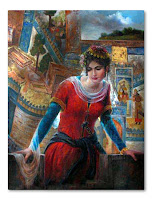 639 A.D. - Negan was a freedom Fighter Leader, A Guerrilla Commander during Sassanids and after the Arabo-Occupation, one of the major resistance fighters of Persia against the Arab Invasion. Negan was not a military woman, nor a woman of nobility, yet she had a heart full of love for Iran. Her heart was pounding for the Mother Land. she had decided to pick up the sword and lead a band of resistance fighters against the Arabo-Animals who invaded The Civilized World and Mother Persia. She died in battle a year after the invasion. The name “Negan” means: Good destiny.
639 A.D. - Negan was a freedom Fighter Leader, A Guerrilla Commander during Sassanids and after the Arabo-Occupation, one of the major resistance fighters of Persia against the Arab Invasion. Negan was not a military woman, nor a woman of nobility, yet she had a heart full of love for Iran. Her heart was pounding for the Mother Land. she had decided to pick up the sword and lead a band of resistance fighters against the Arabo-Animals who invaded The Civilized World and Mother Persia. She died in battle a year after the invasion. The name “Negan” means: Good destiny.
795 A.D. - Banu was the Wife of Babak Khoramdin (Persian Legendary Freedom Fighter), she fought side by side to her husband Babak. Banu & Babak Khoramdin are considered as one of the most heroic freedom fighters of Persia who initiated the Khoramdinan movement. It was a freedom fighting movement aimed to overthrow the Tazi Arab Caliph occupiers and at the time rulers of Persia. After the occupation of Persia by the Arab Hounds, Banu and Babak worked as revolutionary resistance fighters leading the Persian Resistance Militia. She fought to the end (816-838 A.D.). The name “Banu” means: Lady.
816 A.D. - The famous female commando and revolutionary Banu, was a lioness. The central area of activity for Banu was Atropatgan state of Persia. Now this woman was amazing! She was the better half of Babak Khoramdin (Legendary Freedom Fighter). Banu was a temperamental Woman and a very skilled archer, she grew up with her bow and arrows! She was Babak's partner in life and death, in war and peace. Banu was a symbol of Pure Persian Pride! Banu and Babak fought the Arab Occupation for years. One of the most dramatic periods in the history of Iran was set under Babak & Banu’s leadership between 816-837 A.D. During these most crucial years, they not only fought against the Caliphate, but also against Tazi Ar ab barbaric behaviors and customs. Eventually, Banu and Babak and their warriors were forced to leave Ghaleye Babak after 23 years of constant successful campaigns that killed over half a million Arabs and Babak's mighty army (Red-Shirts) was never once defeated. They were eventually betrayed by one of their own officers and were handed over to the Abbasid Caliph. They lived and they died as Proud Persians.
ab barbaric behaviors and customs. Eventually, Banu and Babak and their warriors were forced to leave Ghaleye Babak after 23 years of constant successful campaigns that killed over half a million Arabs and Babak's mighty army (Red-Shirts) was never once defeated. They were eventually betrayed by one of their own officers and were handed over to the Abbasid Caliph. They lived and they died as Proud Persians.
Click Here to see a summary video clip in Persian about Babak's life and History.
 379 A.D. - Zenon from Crete of Persia, was the Court Dancer of Shah Ardeshir II, she is mentioned in the history books as “the apple of the King’s eye”. Dancing appeared in the Persian Mystic court dances. The only survivor in Persian dance in its existing condition, which has survived throughout the centuries. Dancing was an advanced, protected art form during many dynasties of the Persian Empire example Parthians and Sassanians. Greek texts, detailed descriptions for different forms of Persian dancing, fire dance, sword dance even horse dance (dancing while horseback). The name “Zenon” means: God-like.
379 A.D. - Zenon from Crete of Persia, was the Court Dancer of Shah Ardeshir II, she is mentioned in the history books as “the apple of the King’s eye”. Dancing appeared in the Persian Mystic court dances. The only survivor in Persian dance in its existing condition, which has survived throughout the centuries. Dancing was an advanced, protected art form during many dynasties of the Persian Empire example Parthians and Sassanians. Greek texts, detailed descriptions for different forms of Persian dancing, fire dance, sword dance even horse dance (dancing while horseback). The name “Zenon” means: God-like.
 639-820 A.D. - When the Arabs conquered Persia in a very brutal way they would prohibit all forms of exotic public dancing and they also forced them to change their religion, and customs by the edge of a sword. Many Persian women joined the resistance fighters against the barbaric Arab oppressors and fought to the end, they rather chose to be cut to pieces by the Arab Sword, than to become a whore in the Arab Bed. That was practically the extinction of the antique Persian exotic dancing traditions but it has still survived to the present day of Iran and the most beautiful women in Persia are devoted to the profession of dancing; the transparency of their shift, which is the only covering they use to conceal their persons, the exquisite symmetry of their forms, their apparent agitation, and the licentiousness of their verses, are so many incentives to a passion which requires more philosophy than the Persians possess to restrain. In the 1950's and 60's, Persian classical dance began a revival but the decline in the monarchy in 1979 was paralleled by a decline in the support and status of dancers. Classical Persian dance today continues to evolve in private, combining strength, flexibility, musicality, and art, into what could be considered the epitome of classical Persian dance.
639-820 A.D. - When the Arabs conquered Persia in a very brutal way they would prohibit all forms of exotic public dancing and they also forced them to change their religion, and customs by the edge of a sword. Many Persian women joined the resistance fighters against the barbaric Arab oppressors and fought to the end, they rather chose to be cut to pieces by the Arab Sword, than to become a whore in the Arab Bed. That was practically the extinction of the antique Persian exotic dancing traditions but it has still survived to the present day of Iran and the most beautiful women in Persia are devoted to the profession of dancing; the transparency of their shift, which is the only covering they use to conceal their persons, the exquisite symmetry of their forms, their apparent agitation, and the licentiousness of their verses, are so many incentives to a passion which requires more philosophy than the Persians possess to restrain. In the 1950's and 60's, Persian classical dance began a revival but the decline in the monarchy in 1979 was paralleled by a decline in the support and status of dancers. Classical Persian dance today continues to evolve in private, combining strength, flexibility, musicality, and art, into what could be considered the epitome of classical Persian dance.
The Persian classical dance is not a dead art, frozen in time and endlessly repeated, but one that is both rich in heritage, and capable of adapting and incorporating elements from outside its tradition...
 1756 B.C. - Doqdu was the Mother of “Asho Zarathushtra”, the great philosopher and prophet. It was during this time around 1737 BCE that Zarathushtra was born. As a young boy he was interested in nature and wanted to know as to how the world was created. His search for creation and the creator lead him to God with whom he communed after several years of meditation. Zarathushtra gave to the world pure Monotheism, a profound concept of One God. Ethical Philosophy of Zoroastrianism is summarized in three Jewels, “Good Thought”, Good Word”, “Good Deed”. The name “Doqdu” means: Selected.
1756 B.C. - Doqdu was the Mother of “Asho Zarathushtra”, the great philosopher and prophet. It was during this time around 1737 BCE that Zarathushtra was born. As a young boy he was interested in nature and wanted to know as to how the world was created. His search for creation and the creator lead him to God with whom he communed after several years of meditation. Zarathushtra gave to the world pure Monotheism, a profound concept of One God. Ethical Philosophy of Zoroastrianism is summarized in three Jewels, “Good Thought”, Good Word”, “Good Deed”. The name “Doqdu” means: Selected.
522 B.C. - Mahruyeh Shahbanu was the Queen of the Persian Empire and the wife of Cambysis (Kambujiye) the Second. The name “Mahruyeh” means: Pretty face.
34 A.D. - Artadokht was the Secretary of Treasury during Ardavan the Fourth of Ashkanid's Dynasty (Parthian Empire). The name “Artadokht” means: Truthful girl.
383 A.D. - Princess Aspas was a Commander of the Persian Sassanid's police and a daughter of Ardeshir the Second (The tenth Sassanid King of Persia). The sword and shield designs are based on archeological finds. The name “Aspas” means: Guard of strength.
559 B.C. - This image is Showing Commander Arteshbod Pantea's War equipments which she always wore with pride. Pantea was one of the All Time Greatest Persian Commanders and she controlled the Persian Imperial Immortal Guards also known as The Elite Units of The Persian Imperial Armed Forces. The name “Pantea” means: Strong and immortal.
 Arabs eventually conquered Persia and destroyed our Persian style of Federalism, Equal Rights and Democracy and replaced these factors with central brutal government, prejudice and slavery. But Persian culture and rich history conquered them! Persia is the only country which didn't become an Arab country (like Egypt, Babylonia, Assyria and all the other ancient countries conquered and destroyed by Arabs) and in spite of centuries of invasions and foreign rule by Greeks, Arabs, Turks, Mongols etc. Persia has retained its own identity, strong culture, language, celebrations, Arts and Proud. Young Iranian woman: Your place is high in the skies of Persia, Arise and break the Arabo-Islamic Chain of slavery, Arise and regain your lost “Persian Prestige”, Arise and once more, regain your humanity and Pure Persian Pride! Think about who you were then and who are you now? You shall arise and the Resistance will be victorious because we are all with you.
Arabs eventually conquered Persia and destroyed our Persian style of Federalism, Equal Rights and Democracy and replaced these factors with central brutal government, prejudice and slavery. But Persian culture and rich history conquered them! Persia is the only country which didn't become an Arab country (like Egypt, Babylonia, Assyria and all the other ancient countries conquered and destroyed by Arabs) and in spite of centuries of invasions and foreign rule by Greeks, Arabs, Turks, Mongols etc. Persia has retained its own identity, strong culture, language, celebrations, Arts and Proud. Young Iranian woman: Your place is high in the skies of Persia, Arise and break the Arabo-Islamic Chain of slavery, Arise and regain your lost “Persian Prestige”, Arise and once more, regain your humanity and Pure Persian Pride! Think about who you were then and who are you now? You shall arise and the Resistance will be victorious because we are all with you.
 This is a very sensitive subject for the ruling elite of our so called “modern world”. Finding indisputable proof that women and men did once rule the world side by side in the ancient times is a political dynamite and could start a revolution that would sweep away the power of the entire world's present ruling establishment! Women are The Mother of Creation and growth.
This is a very sensitive subject for the ruling elite of our so called “modern world”. Finding indisputable proof that women and men did once rule the world side by side in the ancient times is a political dynamite and could start a revolution that would sweep away the power of the entire world's present ruling establishment! Women are The Mother of Creation and growth.
 Women actively took part in many of the future movements for freedom of Iran and repossession of their human rights from Arabs. Women were the most oppressed segment of Iranian society by the Arabs and they were a significant part of the many Revolutionary Movements of Iran including the Sanbad movement in Neyshabour of Khorasan (Northeast of Iran), Ostadsis' movement in Sistan (Southeast of Iran), Moqanna' and Sarbedaran movement in Khorasan (Northeast of Iran), and Babak Khoramdin's movement in Azerbaijan (Northwest of Iran). To this date, the Iranian Women's Movement battles continues on...
Women actively took part in many of the future movements for freedom of Iran and repossession of their human rights from Arabs. Women were the most oppressed segment of Iranian society by the Arabs and they were a significant part of the many Revolutionary Movements of Iran including the Sanbad movement in Neyshabour of Khorasan (Northeast of Iran), Ostadsis' movement in Sistan (Southeast of Iran), Moqanna' and Sarbedaran movement in Khorasan (Northeast of Iran), and Babak Khoramdin's movement in Azerbaijan (Northwest of Iran). To this date, the Iranian Women's Movement battles continues on...
Don't forget our brave and mighty Lionesses!
 The history of Persians after the Arab conquest can be summarized in three words: oppression, misery and massacre. To impose the new barbaric Arabic culture and religion, the old culture and creed had to be destroyed. Therefore first they targeted the libraries, universities and schools. Only few examples reflect the enormity of the calamity that befell upon Persia at 630 A.D. To conquer Persia and force Islam, the Arab invaders resorted to many inhumane actions including massacre, mass enslavement of men, women and children, and imposition of heavy taxes on those who did not convert.
The history of Persians after the Arab conquest can be summarized in three words: oppression, misery and massacre. To impose the new barbaric Arabic culture and religion, the old culture and creed had to be destroyed. Therefore first they targeted the libraries, universities and schools. Only few examples reflect the enormity of the calamity that befell upon Persia at 630 A.D. To conquer Persia and force Islam, the Arab invaders resorted to many inhumane actions including massacre, mass enslavement of men, women and children, and imposition of heavy taxes on those who did not convert.
“Iranians have developed a surprising ability to adapt, but only outwardly, superficially & when absolutely required. Persian culture is both very strong & resilient. Iran was neither truly Arabized nor Islamized.”
 646 A.D. - When the Arab commander Saad ibn-e Abi Vaghas faced the huge Persian library of Cteciphon (capital city), he wrote to Omar (Calif/Ruler of Arab Muslims): what should be done about the books?. Omar replied that the “blasphemous” books are not needed, as for us only Koran is sufficient. Thus, the huge library was destroyed and the books or the product of the generations of Persian scientists and scholars were burned in fire or thrown into the Euphrates. Later by the order of another Arab ruler (Ghotaibeh ibn-e Moslem) in Khwarezmia, those Persians who were literate with all the historians, writers and Mobeds were massacred and their books burned so that after one generation the people were illiterate. Other libraries in Ray and Khorassan received the same treatment and the famous international University of Gondishapour declined and eventually abandoned, and its library and books vanished. Only few books survived, because the Persian scholars quickly translated them into Arabic in order to save them.
646 A.D. - When the Arab commander Saad ibn-e Abi Vaghas faced the huge Persian library of Cteciphon (capital city), he wrote to Omar (Calif/Ruler of Arab Muslims): what should be done about the books?. Omar replied that the “blasphemous” books are not needed, as for us only Koran is sufficient. Thus, the huge library was destroyed and the books or the product of the generations of Persian scientists and scholars were burned in fire or thrown into the Euphrates. Later by the order of another Arab ruler (Ghotaibeh ibn-e Moslem) in Khwarezmia, those Persians who were literate with all the historians, writers and Mobeds were massacred and their books burned so that after one generation the people were illiterate. Other libraries in Ray and Khorassan received the same treatment and the famous international University of Gondishapour declined and eventually abandoned, and its library and books vanished. Only few books survived, because the Persian scholars quickly translated them into Arabic in order to save them.
 Massacre and conversion: By the order of the Arab commander “Yazid ibn-e Mohalleb” in Gorgan so many Persians were beheaded that their blood mixed with water would energize the millstone to produce as much as one day meal for him, as he had vowed and ordered their soldiers to cut off the tongue of anyone who dared to speak Persian. This is why in Arabic, Persians are called “Ajam”, meaning mute! The event of blood mill has been quoted by the generations of historians and Persian Zoroastrian families to this day, yet our books of history have been silent about it. In recent years however, disenchanted Iranian scholars have been writing about the blood mills and in fact this event has been reported by our historians of the Islamic era. On the way to Mazandaran (northern Iran) the same commander ordered 12,000 Persian captives to be hanged at the two sides of the road so that the victorious Arab army pass through. Upon arrival, many more were massacred in that province and heavy tax (Jizya) was imposed on the survivors who did not convert. Some historians have estimated that a total of 400,000 Persian civilians were massacred. After the battle of Alis, the Arab commander (Khalid ibn-e Valid) ordered all the prisoners of war be decapitated so that a creek of blood flows. When the city of “Estakhr” in the south put up stiff resistance against the Arab invaders, 50,000 residents were slaughtered. One of the battles by the Arabs has been named, “Jelovla” (covered), because an estimated 100,000 bodies of the slain Persian soldiers covered the desert. It is reported that 130,000 Persian women and children were enslaved and sold in the Mecca and Medina markets and large amount of gold and silver plundered. One respected Iranian scholar recently wrote, “Why so many had to die or suffer? Because one side was determined to impose his religion upon the other who could not understand”. The Arabs colonized, exploited, raped and despised the population. They even named the Persian converts “Mavali” or “liberated slaves”. Nevertheless history reflects the extent of atrocities committed by the Arab conquerors. continue »
Massacre and conversion: By the order of the Arab commander “Yazid ibn-e Mohalleb” in Gorgan so many Persians were beheaded that their blood mixed with water would energize the millstone to produce as much as one day meal for him, as he had vowed and ordered their soldiers to cut off the tongue of anyone who dared to speak Persian. This is why in Arabic, Persians are called “Ajam”, meaning mute! The event of blood mill has been quoted by the generations of historians and Persian Zoroastrian families to this day, yet our books of history have been silent about it. In recent years however, disenchanted Iranian scholars have been writing about the blood mills and in fact this event has been reported by our historians of the Islamic era. On the way to Mazandaran (northern Iran) the same commander ordered 12,000 Persian captives to be hanged at the two sides of the road so that the victorious Arab army pass through. Upon arrival, many more were massacred in that province and heavy tax (Jizya) was imposed on the survivors who did not convert. Some historians have estimated that a total of 400,000 Persian civilians were massacred. After the battle of Alis, the Arab commander (Khalid ibn-e Valid) ordered all the prisoners of war be decapitated so that a creek of blood flows. When the city of “Estakhr” in the south put up stiff resistance against the Arab invaders, 50,000 residents were slaughtered. One of the battles by the Arabs has been named, “Jelovla” (covered), because an estimated 100,000 bodies of the slain Persian soldiers covered the desert. It is reported that 130,000 Persian women and children were enslaved and sold in the Mecca and Medina markets and large amount of gold and silver plundered. One respected Iranian scholar recently wrote, “Why so many had to die or suffer? Because one side was determined to impose his religion upon the other who could not understand”. The Arabs colonized, exploited, raped and despised the population. They even named the Persian converts “Mavali” or “liberated slaves”. Nevertheless history reflects the extent of atrocities committed by the Arab conquerors. continue »
Click Here to read the Historical letter of Yazdgird III to the Arab Calif Omar.
 The Future - Iran today stands at the crossroads of history and we live in remarkable times, and thanks to the tyranny of the islamic republic, we are now able to shed the Islamic past and move ahead into the future. A future without Islam, or any other organised religion. In this, we are far more fortunate than the rest of the world, for once this regime crumbles into dust, the tyranny of religion will never again raise it's ugly head in our land, for we will never forget. Islam as an Arab ideology has been a disease for Iran and Iranians and the only people who have truly once and for all uprooted Islam from Iran are the Mullahs themselves in only three decades. In a way, we should be grateful to them for this remarkable achievement. For millenniums when invaders came to Persia, the Iranians never become the invaders; the invaders became Iranians. Their conquerors were said to have “gone Persian,” like Alexander, who, after laying waste to the vanquished Persia, adopted its cultural and administrative practices, took a Persian wife (Roxana), and ordered thousands of his troops to do the same in a mass wedding. Iranians seem particularly proud of their capacity to get along with others by assimilating compatible aspects of the invaders' ways without surrendering their own; a cultural elasticity that is at the heart of their Persian identity. “The Invaders Can't Control What's Inside Us”
The Future - Iran today stands at the crossroads of history and we live in remarkable times, and thanks to the tyranny of the islamic republic, we are now able to shed the Islamic past and move ahead into the future. A future without Islam, or any other organised religion. In this, we are far more fortunate than the rest of the world, for once this regime crumbles into dust, the tyranny of religion will never again raise it's ugly head in our land, for we will never forget. Islam as an Arab ideology has been a disease for Iran and Iranians and the only people who have truly once and for all uprooted Islam from Iran are the Mullahs themselves in only three decades. In a way, we should be grateful to them for this remarkable achievement. For millenniums when invaders came to Persia, the Iranians never become the invaders; the invaders became Iranians. Their conquerors were said to have “gone Persian,” like Alexander, who, after laying waste to the vanquished Persia, adopted its cultural and administrative practices, took a Persian wife (Roxana), and ordered thousands of his troops to do the same in a mass wedding. Iranians seem particularly proud of their capacity to get along with others by assimilating compatible aspects of the invaders' ways without surrendering their own; a cultural elasticity that is at the heart of their Persian identity. “The Invaders Can't Control What's Inside Us”
“A great civilization is not conquered from without until it destroys itself from within.”
“May God (Ahura Mazda) always light your path and bless you with lessons to grow by!”





















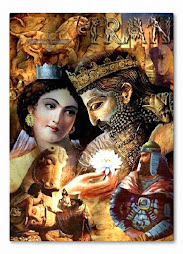

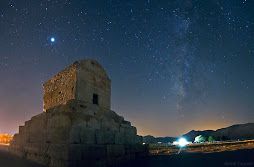



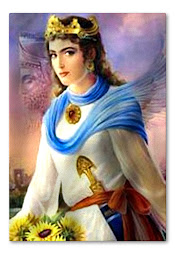


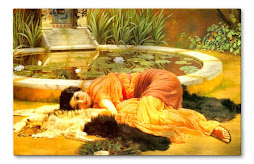
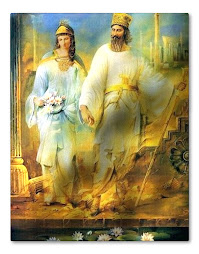

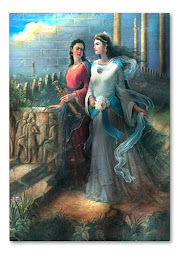


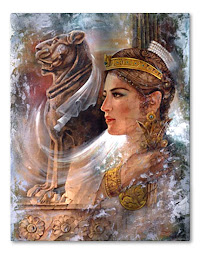
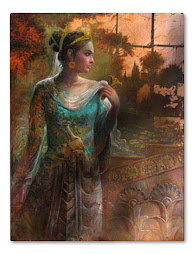
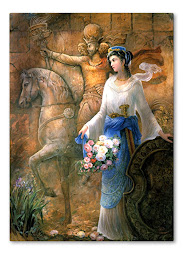
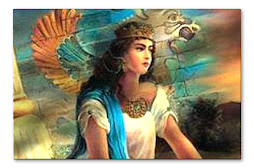

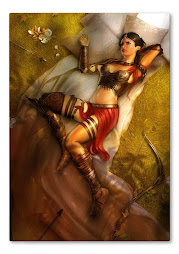
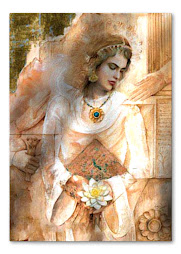
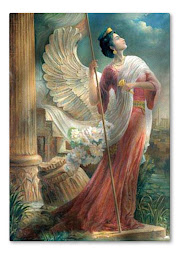
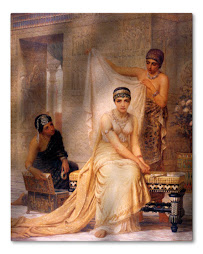
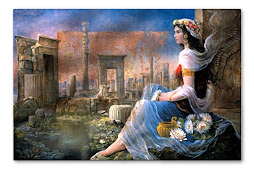

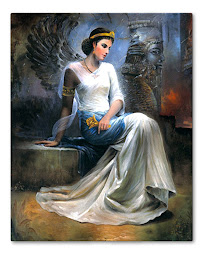

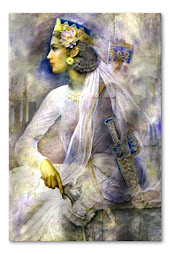
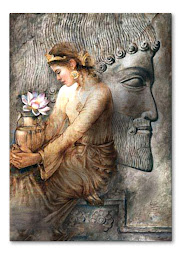
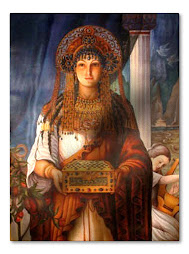
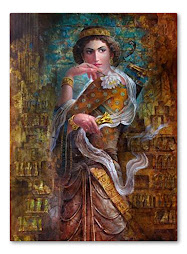
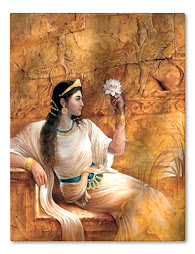
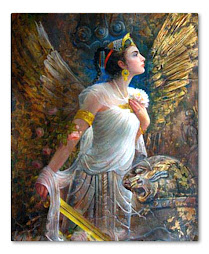
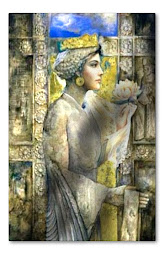


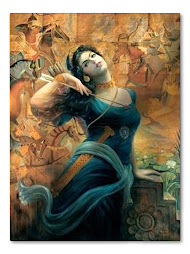
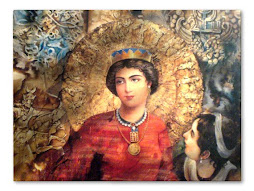








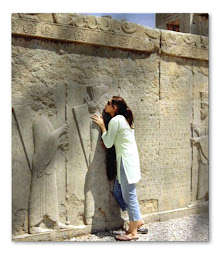


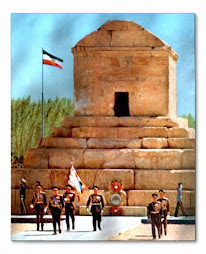


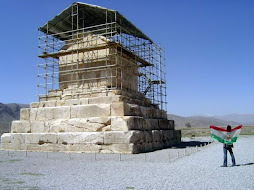























.jpg)
